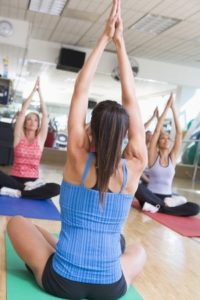 There is a concept in theater called the Fourth Wall. If you haven’t heard of it, don’t worry about it, I made it through four years of art school without knowing what it was. The idea is when you are in your audience chair you will never be directly spoken to if the fourth wall remains intact. You are in fact spying on the characters in their daily life. If an actor in character stops and breaks the fourth wall, they will stop the play and directly address you, Joe Shmoe, in the audience. Think Zack Morris in Saved By The Bell and more recently Kevin Spacey’s character in House of Cards.
There is a concept in theater called the Fourth Wall. If you haven’t heard of it, don’t worry about it, I made it through four years of art school without knowing what it was. The idea is when you are in your audience chair you will never be directly spoken to if the fourth wall remains intact. You are in fact spying on the characters in their daily life. If an actor in character stops and breaks the fourth wall, they will stop the play and directly address you, Joe Shmoe, in the audience. Think Zack Morris in Saved By The Bell and more recently Kevin Spacey’s character in House of Cards.
In yoga classes there is an expectation of a fourth wall. Students walk into the class, set up their mat and then almost watch a video of a teacher at the front of the room. Sometimes the video may involve a physical assist where the teacher touches the student, but you are never really called upon directly. There exists this phenomenon. I am very aware of it.
But I don’t really teach like that. I’m a student in the classroom too. So if you walk into my class you had better be ready to be involved in the learning and teaching process. I will very often stop class and ask questions. All of my ongoing and devoted students will mumble or grumble if I’m asking about intensity (they know the drill). All of the new students in the room stare wide eyed and look around the room at the fact that the fourth wall has been broken. I am talking to them!
It gets even worse when I ask them to come to the front of the room. This is a trick I learned from my teacher Patty Townsend, who appreciates how visual learning yoga needs to be. You would think I asked if everyone wanted to come to the front of the room for a cup of tea. They all look down at their little yoga mats like I’ve asked them to leave the very last bit of safety they know. My regular students come in close knowing that whatever there is to see is going to be tiny. They are fine sitting a few feet away from someone’s down dog or plank so they can see what I’m talking about.
I’ve been teaching yoga for six years now. I know for a fact that 70% of the people in any given class will not understand some of the simplest directions I give unless they see it. Watching a fellow student practice a posture while I point out subtleties of the pose is incredibly helpful. It also allows me to be a student in the room when I learn that everyone prefers if I say something a different way or if everyone in the room experiences an entirely different emotion when practicing a pose that I’ve been doing rather mindlessly for years. Unlike some teachers who can still remember their beginner years, I was learning yoga while I was going through puberty. Some of the poses are very natural to me because I’ve been doing them for a long time.
One of the best teaching moments was when I was flipping out because beginner students wouldn’t bend their elbows when they were on their hands and knees. One very insightful and brave student yelled out “I’m afraid I’m going to fall on my face if I bend my elbows.” Never once did I realize the instinctual desire to keep the arms straight to protect the torso from falling. Again proving that the novice has a wealth of information to provide the teacher!
Copyright: stockbroker / 123RF Stock Photo